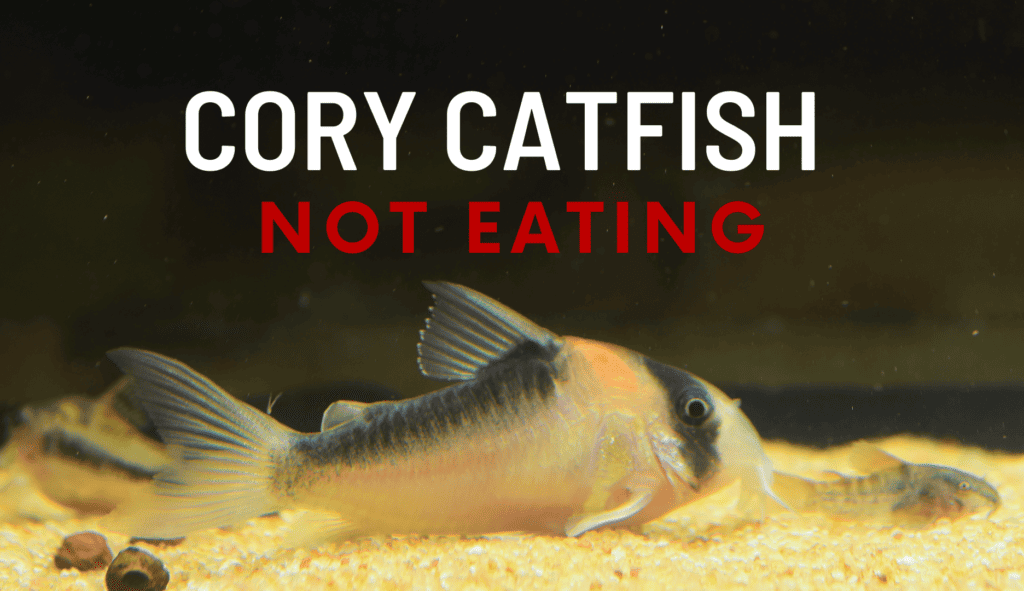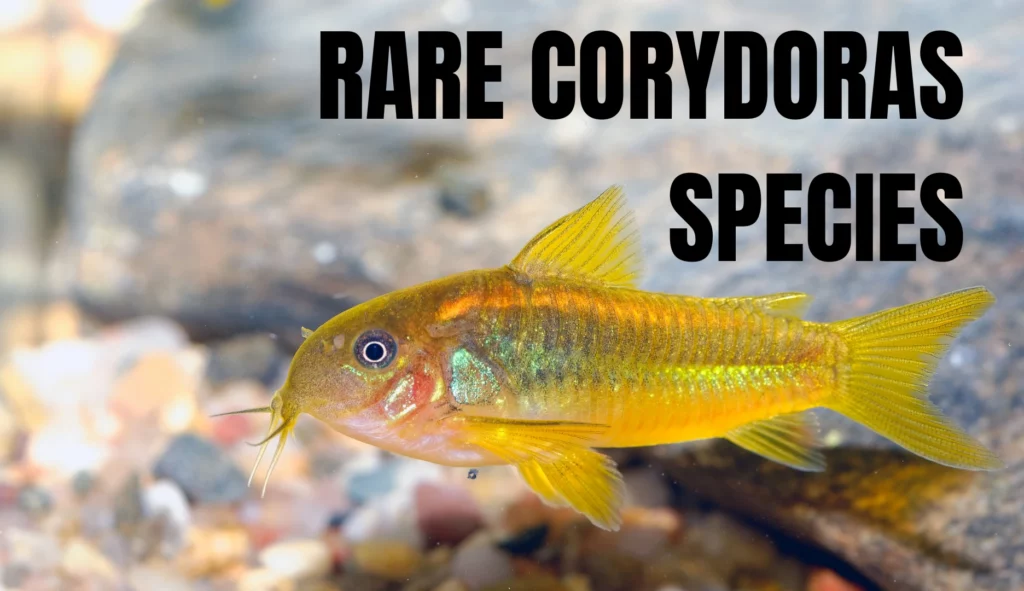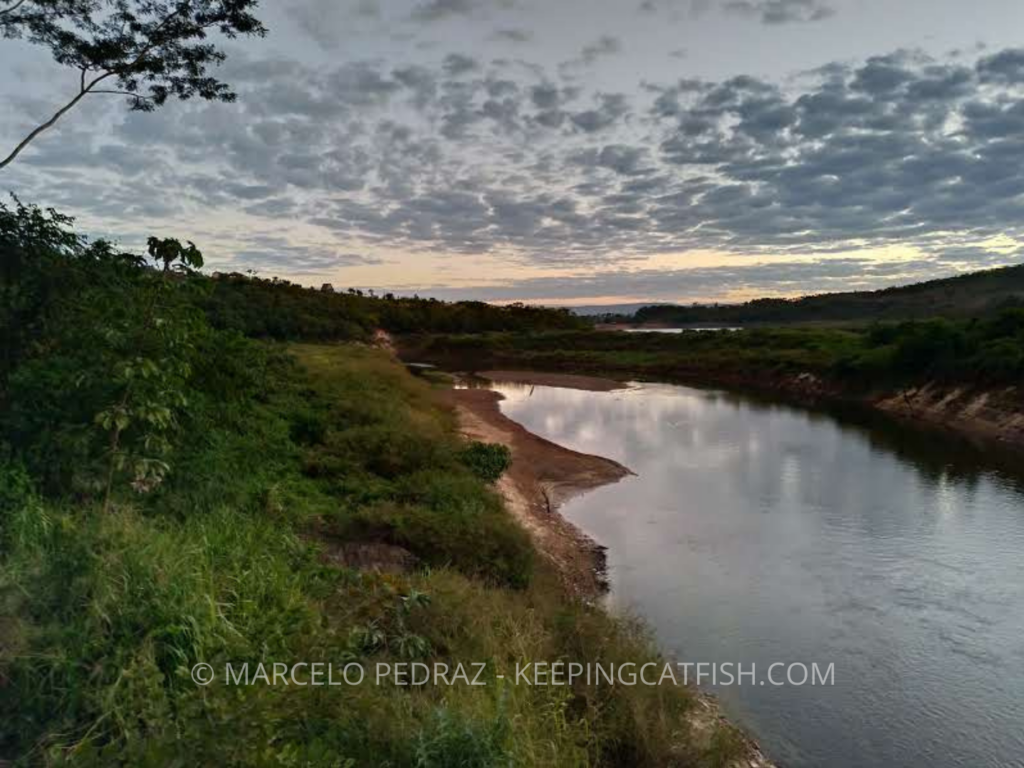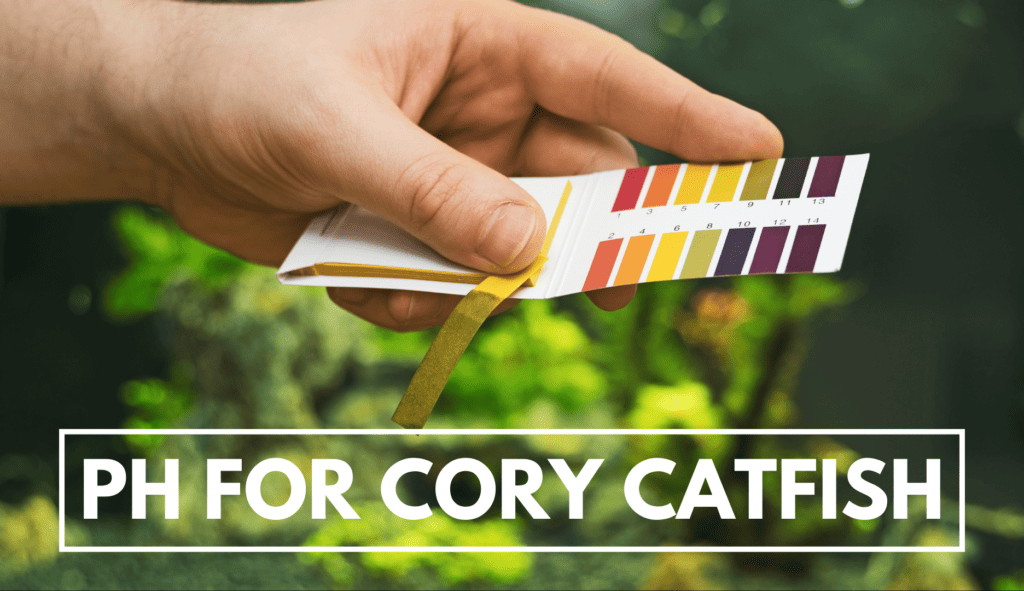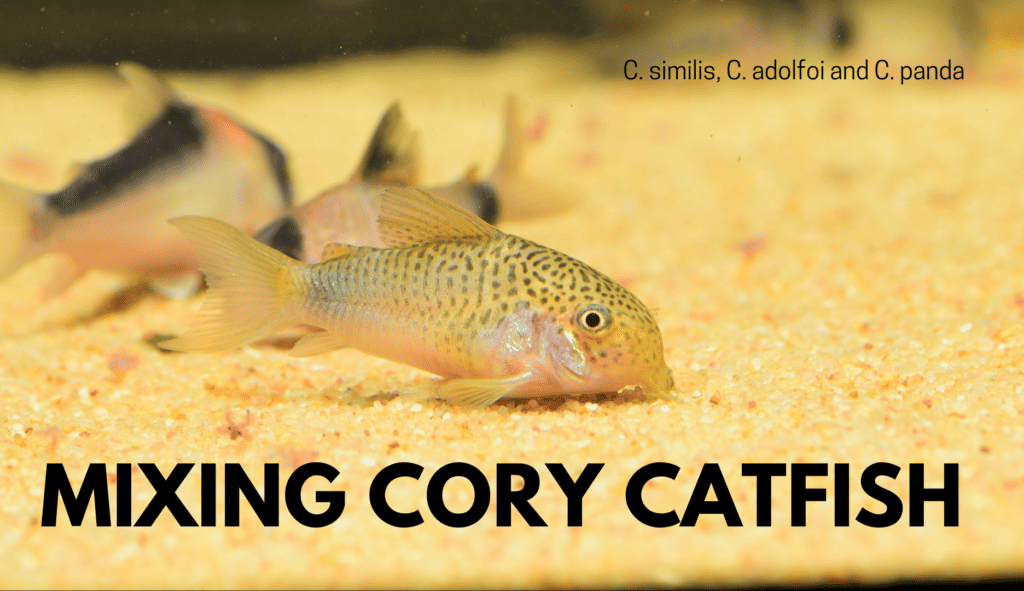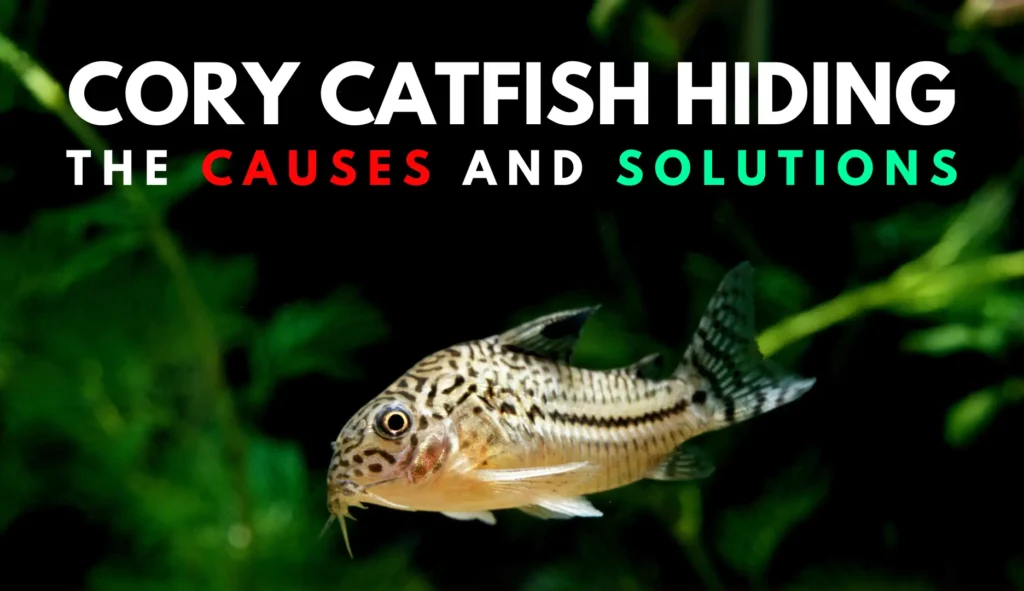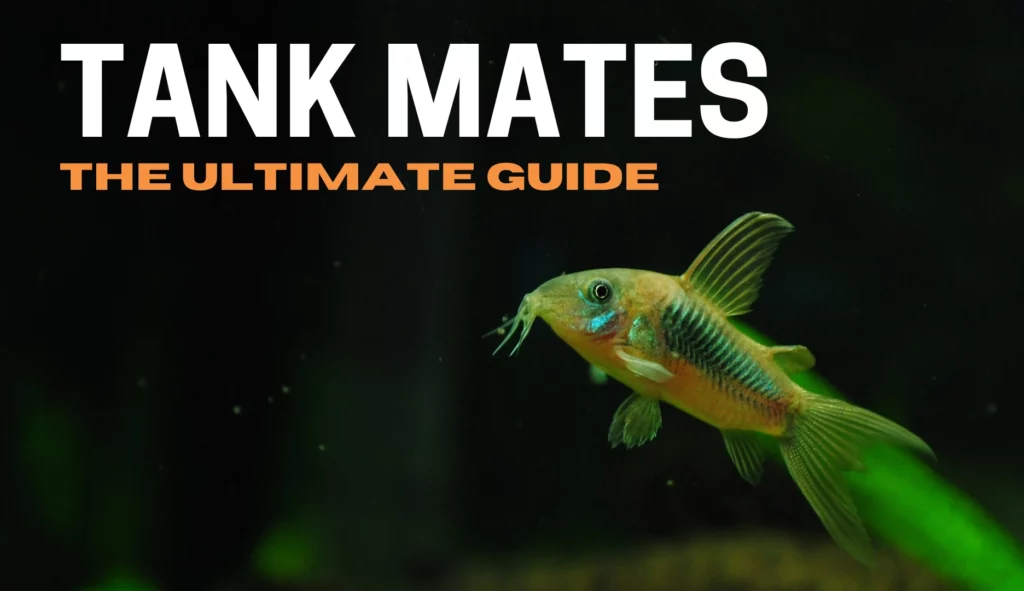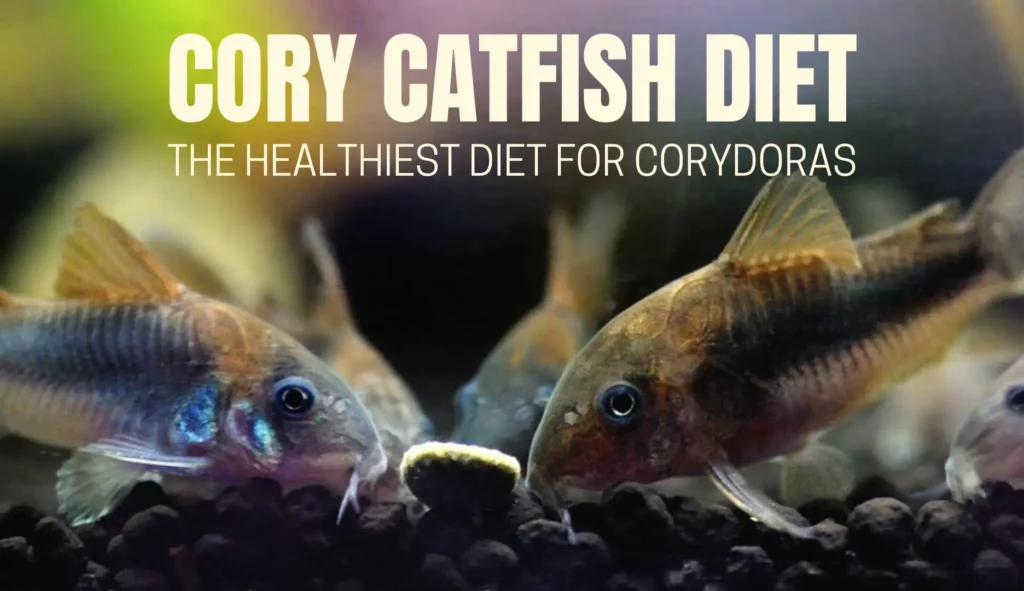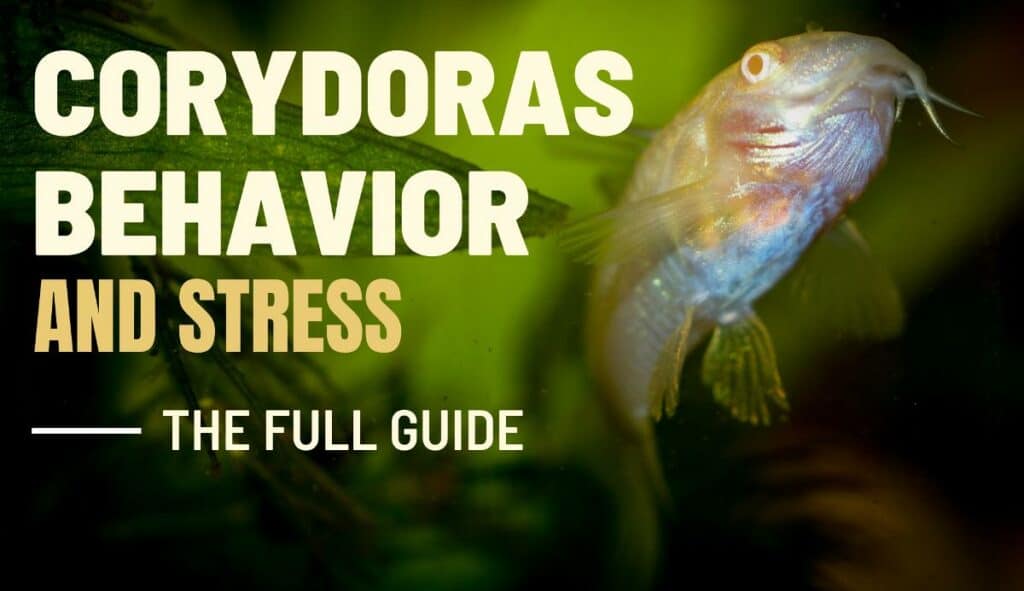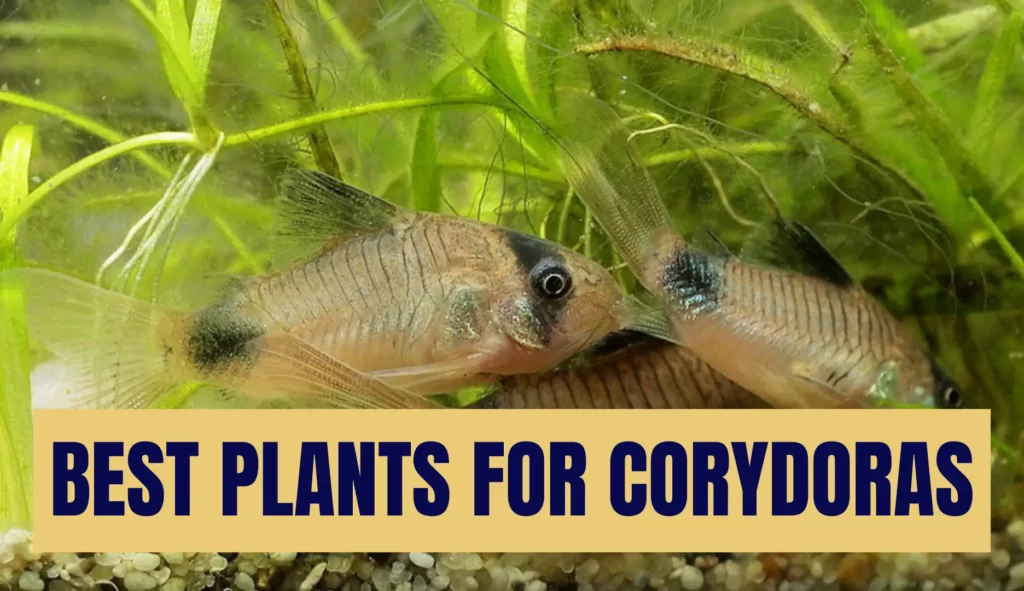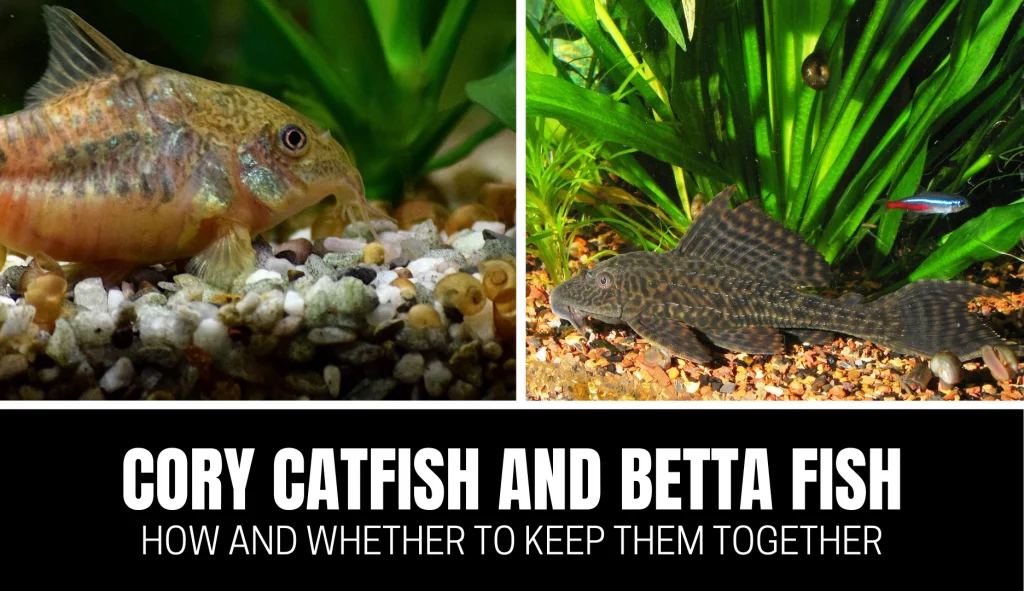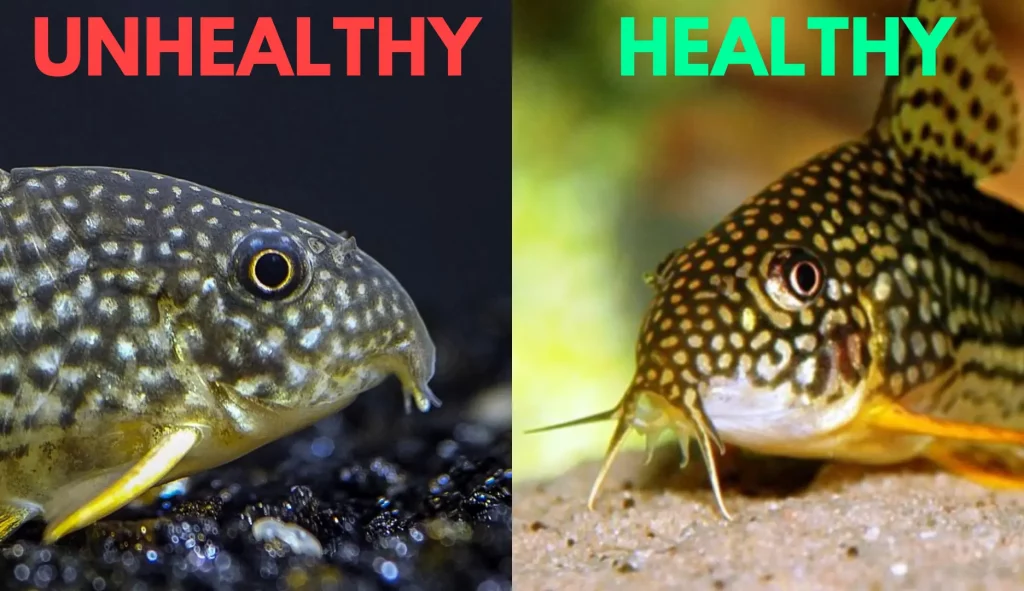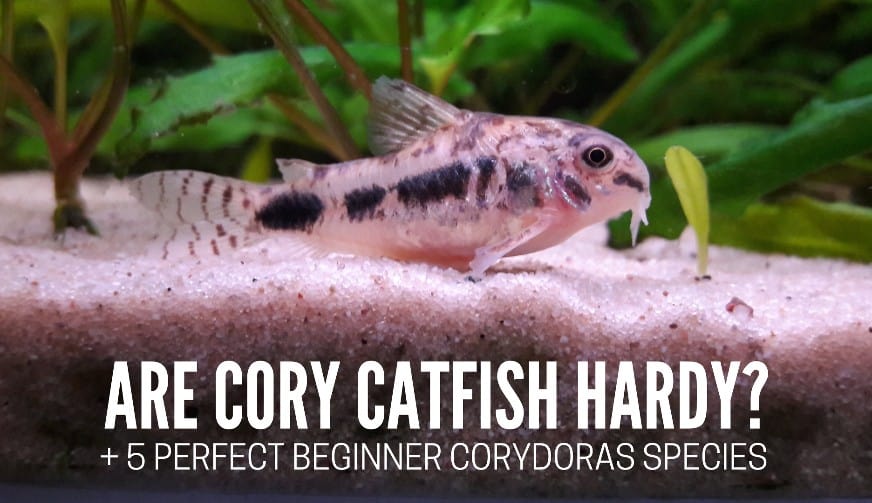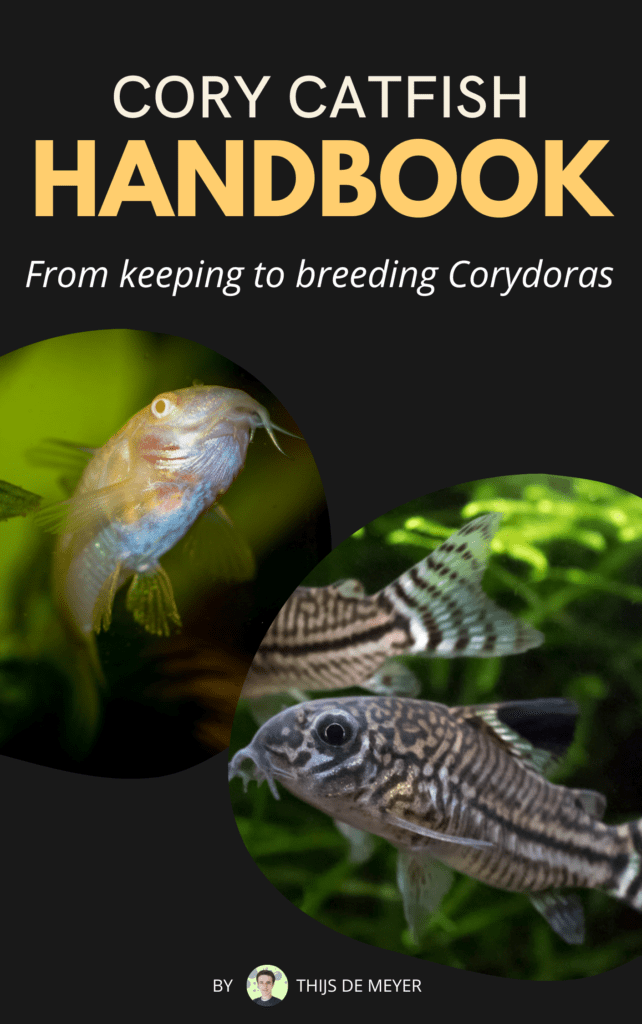Cory catfish not eating is a relatively common problem among aquarists. Finding the cause of appetite loss is not always easy, and it can have different causes.
Lack of appetite in Corydoras can be caused by several factors as stress, improper diet, disease, and poor environmental conditions in the aquarium; it’s vital to pay attention to these factors and take preventative measures to ensure that corydoras are healthy and eating.
Stress
When an animal is in a stressful situation, the body releases hormones such as cortisol and adrenaline, which “prepare the organism” to deal with the situation.
When this response is maintained for a long time, animals have their bodies constantly flooded with these hormones, leading to several negative consequences that directly incite a decrease in the immune response and loss of appetite.
Concerning aquarium corydoras, stress is a common problem that directly affects the appetite of these fish. Fish having trouble eating is a clear sign of stress. This stress has several causes, occurring when the aquarium environment is unsuitable for the species, when predators are present, or when the fish feels unsafe in its space.
Keeping cory catfish not in group
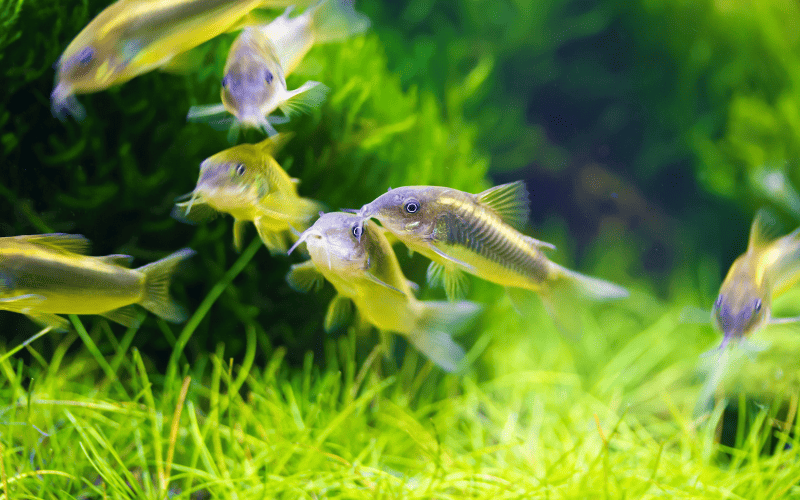
Corydoras are schooling fish, so you must keep them in groups of at least six fish of the same species. When they are in a group, it promotes the natural behavior of the species and the fish feel safer and more comfortable, reducing stress and making the fish comfortable enough to feed.
Corydoras, kept alone, suffers from problems such as boredom and even depression, being constantly hidden and stressed. These problems make the cory catfish not eat, eventually causing death.
Newly added fish
Stress can also affect newly introduced fish in aquariums. When placed in a new environment, fish need some time to adapt to new conditions, such as temperature and water quality. They also have to deal with new tankmates.
This situation can cause stress in the fish, which can affect their feeding behavior, leading to a decrease in food consumption.
If your tank is set up correctly, this loss of appetite will be temporary and after a couple days/weeks your fish will start eating.
Bad tank setup
Several environmental factors can stress fish in an aquarium, such as too bright lights, an aquarium located in a busy place, the lack of available hiding places, and an overcrowded aquarium.
Ensure the aquarium environment is suitable for the species in question by providing adequate hiding places, limiting the number of fish in the aquarium, and adjusting lighting and water flow according to the species‘ needs.
Scroll down to read more about environmental stress.
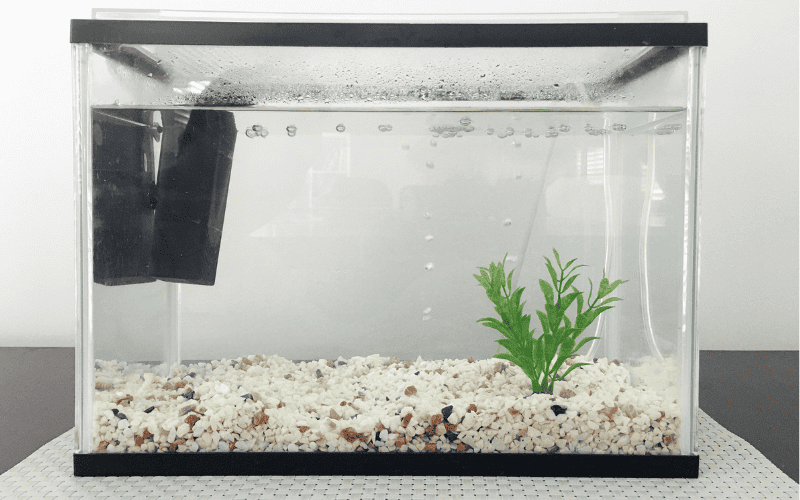
Wild caught fish
Did you know aquarium fish are still being caught in the wild? Although most common types are bred, a reasonable part is being taken from the wild.
The collection process involves a significant physical effort for the fish, in addition to sudden changes in the environment, such as exposure to air, constant changes of location, overcrowded aquariums, and manipulation by man.
Such factors can lead to an increase in levels of the stress hormone cortisol, which can cause a decrease in appetite and food intake by fish.
Another factor is that freshly collected fish may have difficulty adapting to a diet based on commercial feeds.
This is because these animals are used to a natural diet of biofilms and live foods and may not recognize food offered in captivity. When handling these fish, it may be necessary to provide them with live or frozen food to help them transition to their new diet.
To minimize stress in fish collected in the wild, we can use some measures, mainly minimizing handling and handling time in fish and in the environment, in addition to the need for transport to be carried out under appropriate conditions, such as temperature and water oxygenation.
After catching, fish should be kept in a quiet, dark environment for a few hours to recover from stress and proceed to quarantine.
Related Read: Cory Catfish Wild Habitat (With Pictures)
Wrong diet
Lack of animal protein
A lack of animal protein in the diet can lead to a lack of appetite in corydoras. These fish are carnivores and need a source of animal protein to stay healthy.
Foods such as mosquito larvae, daphnia, brine shrimp, and shrimp are excellent sources of animal protein for corydoras.
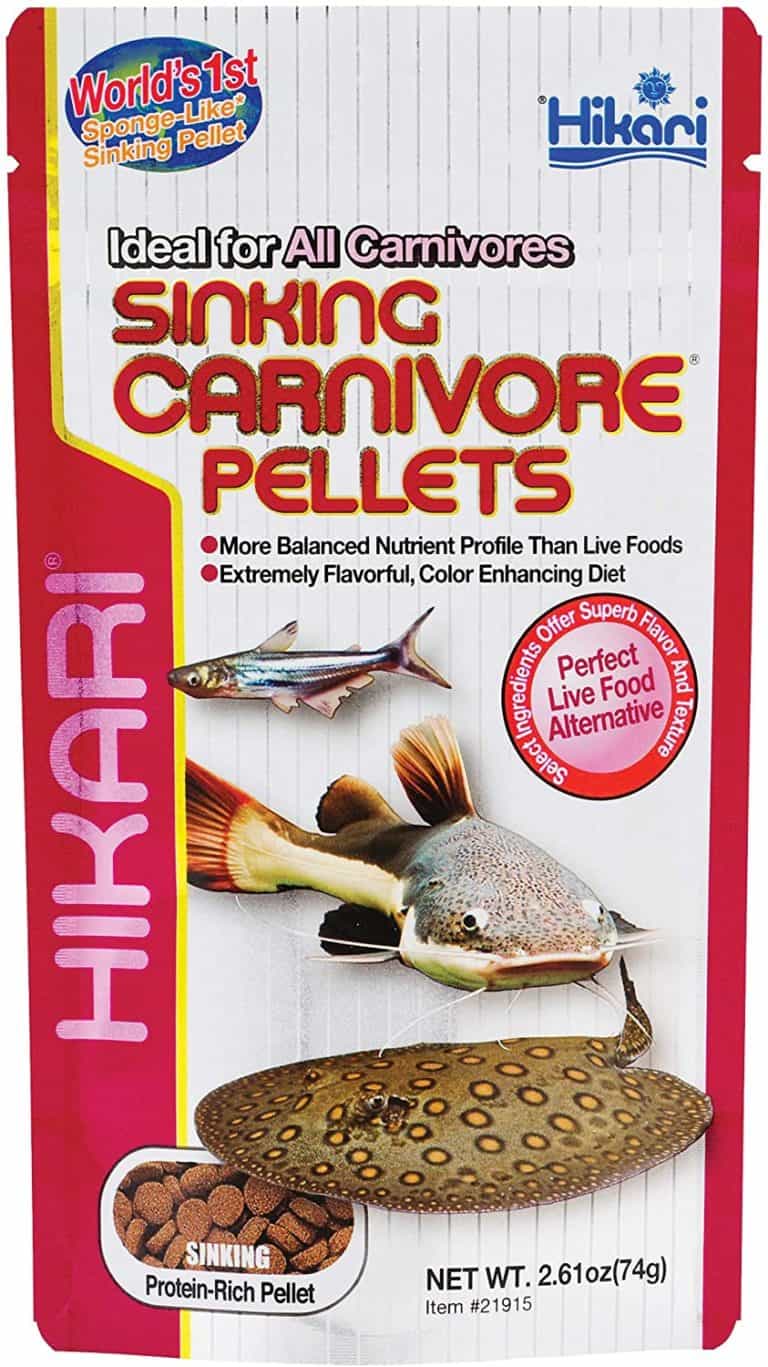
The carnivore pellets from Hikari are a favorite and rich in animal protein. Check out on Amazon
Poor quality foods
Food of poor quality, with a low nutritional index, or unsuitable for corydoras can cause digestive problems, which can result in loss of appetite. Lower-quality feeds often have fewer nutrients and can be difficult to digest, affecting the overall health of corydoras.
Among foods not recommended are hard-shelled insects such as crickets and beetles, unsanitary vegetables containing traces of chemicals such as pesticides, and non-specific foods (such as cat or dog feed).
Lastly, stay away from cheap commercial foods you find at Walmart etc. These contain lots of fillers and few nutrients. It’s recommended to buy specific sinking pellets.
Hikari makes great pellets for a good price, and if you want the premium option go for Repashy gels.
Lack in variety
Corydoras need a varied diet to meet their nutritional needs. A monotonous diet (such as one based only on a commercial pet food label or two) can lead to losing interest in food. It is vital to offer a variety of foods, including fresh foods such as live larvae, worms, etc.
Feeding the fish in different places is also a way to make the cory look for food, increasing interest.
Overfeeding/Underfeeding
Feeding too much or too little can affect the health of corydoras and their willingness to eat. Overfeeding (besides helping to rapidly degrade water quality) can cause digestive problems and obesity, while underfeeding can lead to a loss of appetite and malnutrition.
It is crucial to feed corydoras in adequate amounts and at a regular frequency (1-2 times a day), and when conditioning for breeding 2-4 times a day.
Diseases
Diseases and illnesses are common problems in tropical aquarium fish, and corydoras are no exception.
Several diseases can affect these fish, such as bacteria, fungi, viruses, and even parasites such as worms and ticks. Ich, anchor worm, and bacterial infection in wattles are common ailments to see in corys kept in less-than-ideal conditions.
A common symptom among different types of illnesses is loss of appetite. If you suspect diseases in corydoras, you must act quickly and seek a veterinarian or specialist to make the correct diagnosis and recommend the appropriate treatment.
Preventing diseases in aquarium fish is easier than treating them, keeping the aquarium clean, avoiding fish overpopulation, and ensuring adequate food.
New fish should be quarantined before adding them to the main aquarium, thus preventing the introduction of disease.
Regularly monitoring aquarium water quality and performing partial changes to keep ammonia, nitrite, and nitrate levels under control are essential steps to ensure system stability. Filters and other equipment such as light fixtures and heaters must be correctly sized.
Bad tank environment
The environmental conditions of the aquarium directly affect the feeding of corydoras. It is crucial to maintain a well-maintained and stable aquarium, which must be cycled and matured before adding fish.
When the aquarium is not in good condition, the fish can feel stressed and this can affect their appetite.
Water parameters
Corydoras need good water quality, free of pollutants such as ammonia and nitrite, and regular testing of water parameters is critical to ensure adequate levels.
Ideally, the pH and temperature should always be within the ideal range for the species inhabiting the tank. For most corydoras, something like 6.5 to 7.2, and between 22 and 28 degrees Celsius, is OK.
Another important factor is oxygenation. Fish need oxygen to survive, so make sure the aquarium has good water circulation and that there is a source of oxygen such as an air pump or porous rock.
Tank mates
Another essential thing to note is the choice of Corydoras aquarium companions. Some fish species can intimidate or even attack corydoras, causing stress and interfering with feeding.
You should always research compatibility between species before adding new fish to your corydoras tank. In addition, it is necessary to observe the behavior of the fish in the aquarium and be prepared to remove any fish showing aggressive behavior.
Read our full guide on Corydoras tank mates by clicking this link.
Conclusion
Cory catfish can stop eating for many reasons, but the most common are stress, a bad diet, and sickness.
By housing your cory catfish in the right environment with the right tank mates and a varied diet, your cory catfish will undoubtedly start eating.

